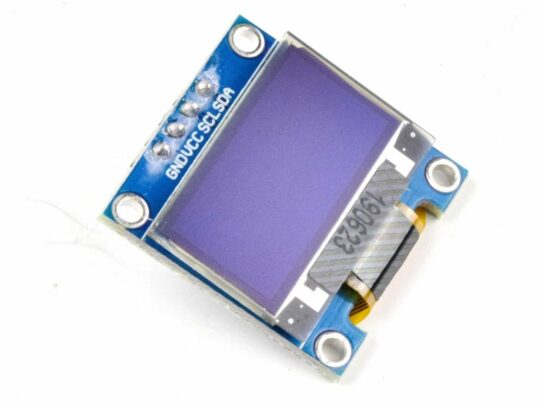
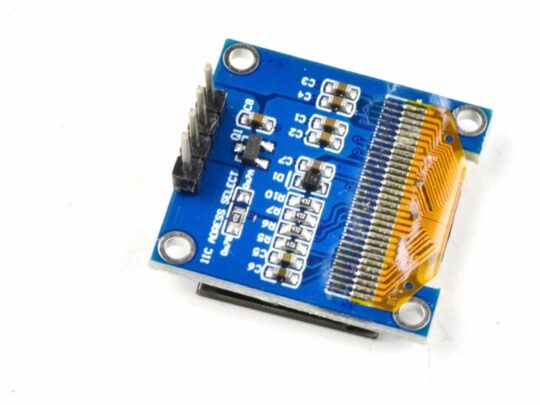
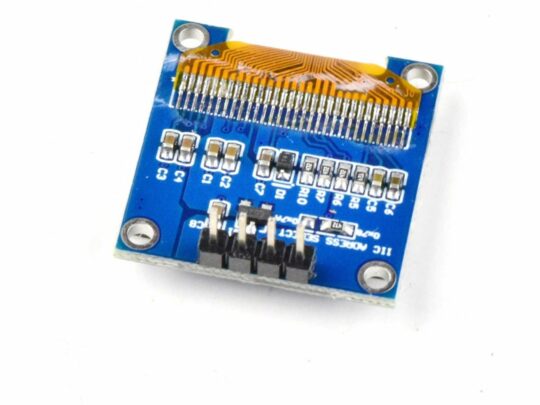
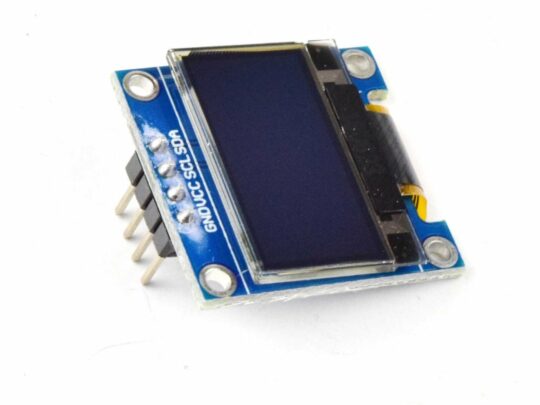
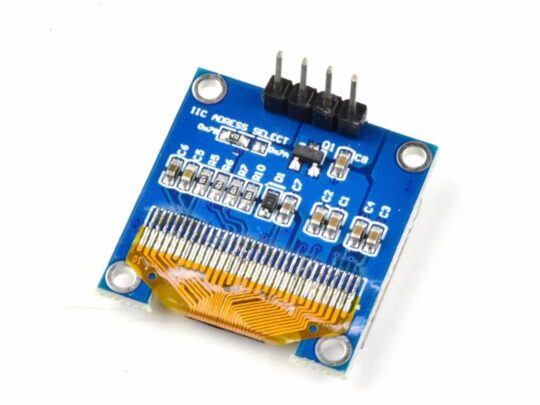
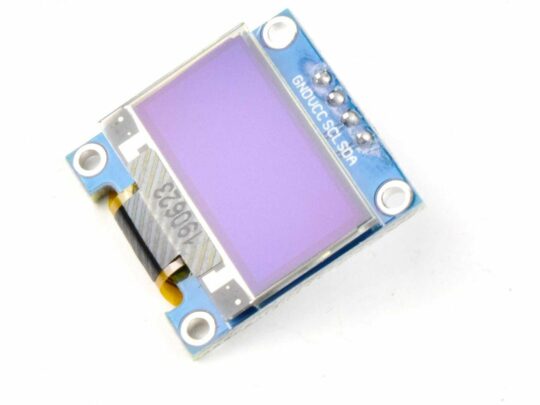

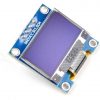
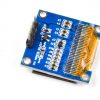
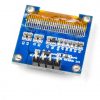
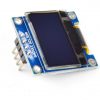
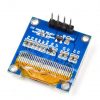
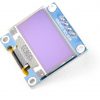
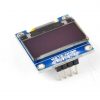
OLED I2C 0.96 inch, 128×64 Pixel, SSD1306 SH1106, 3-5V
CAD 5.90 CAD 4.72
Victoria Day Sale
ends May 20th
- Description
- Reviews (3)
Description
OLED Displays
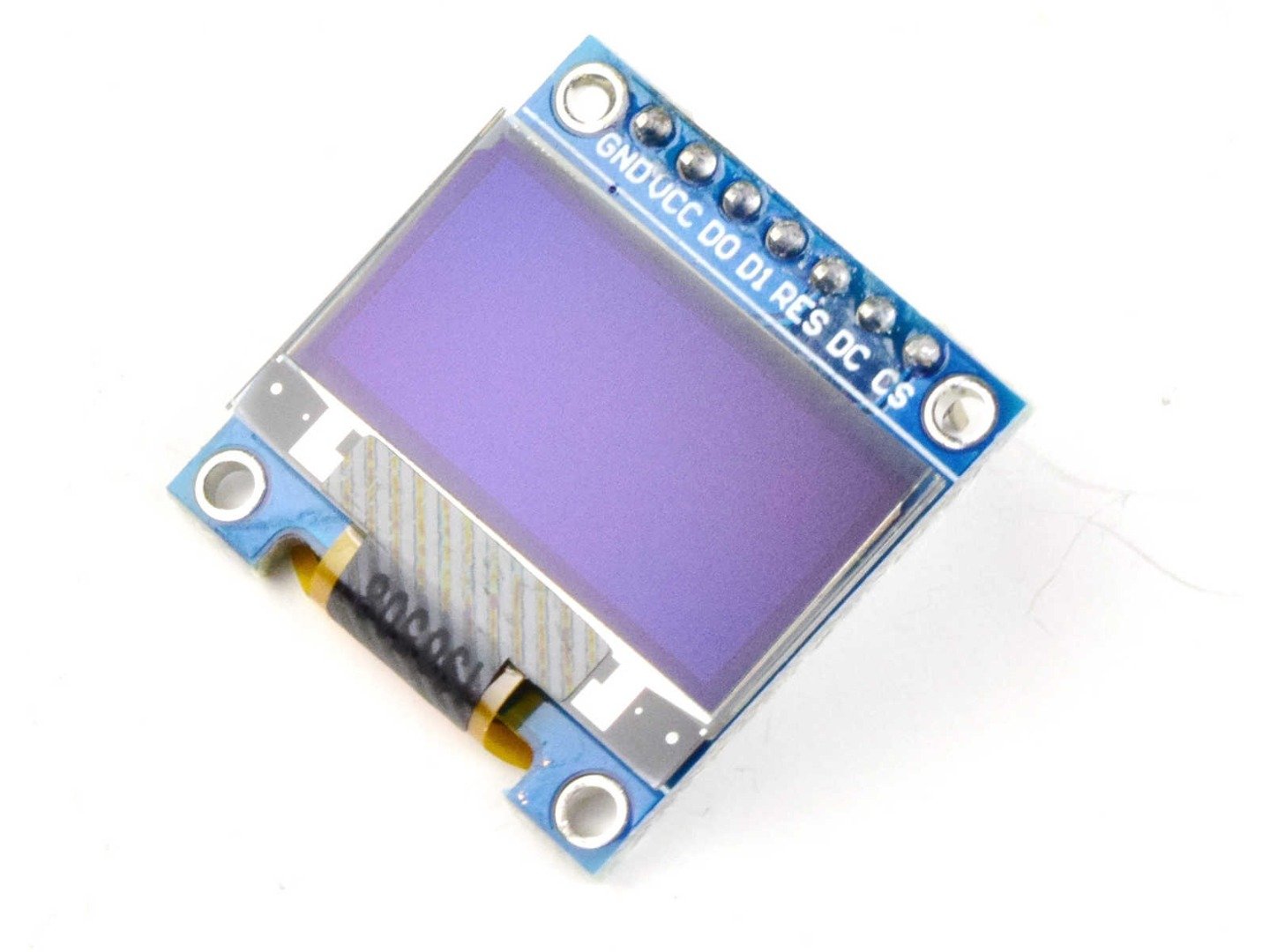
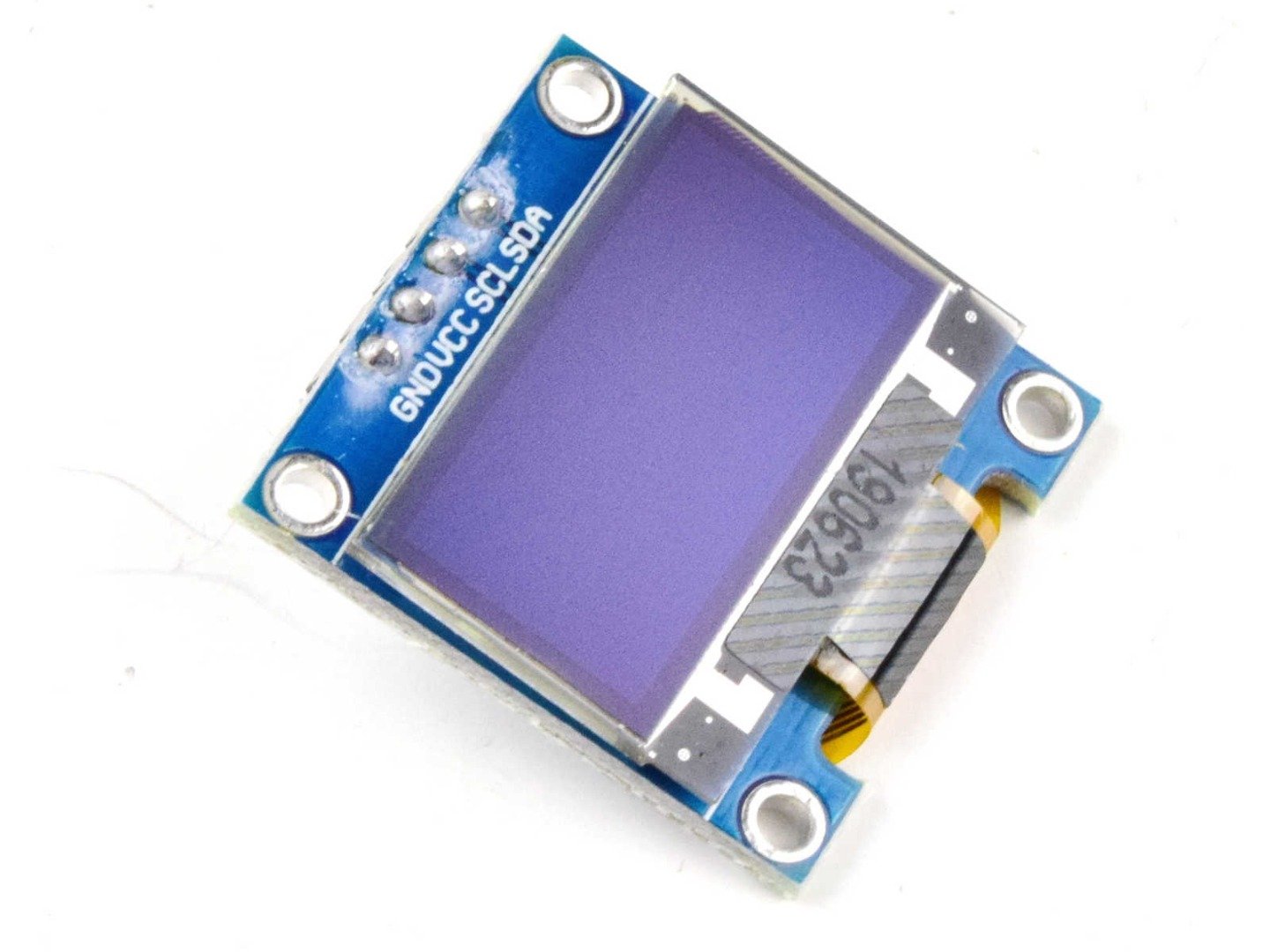
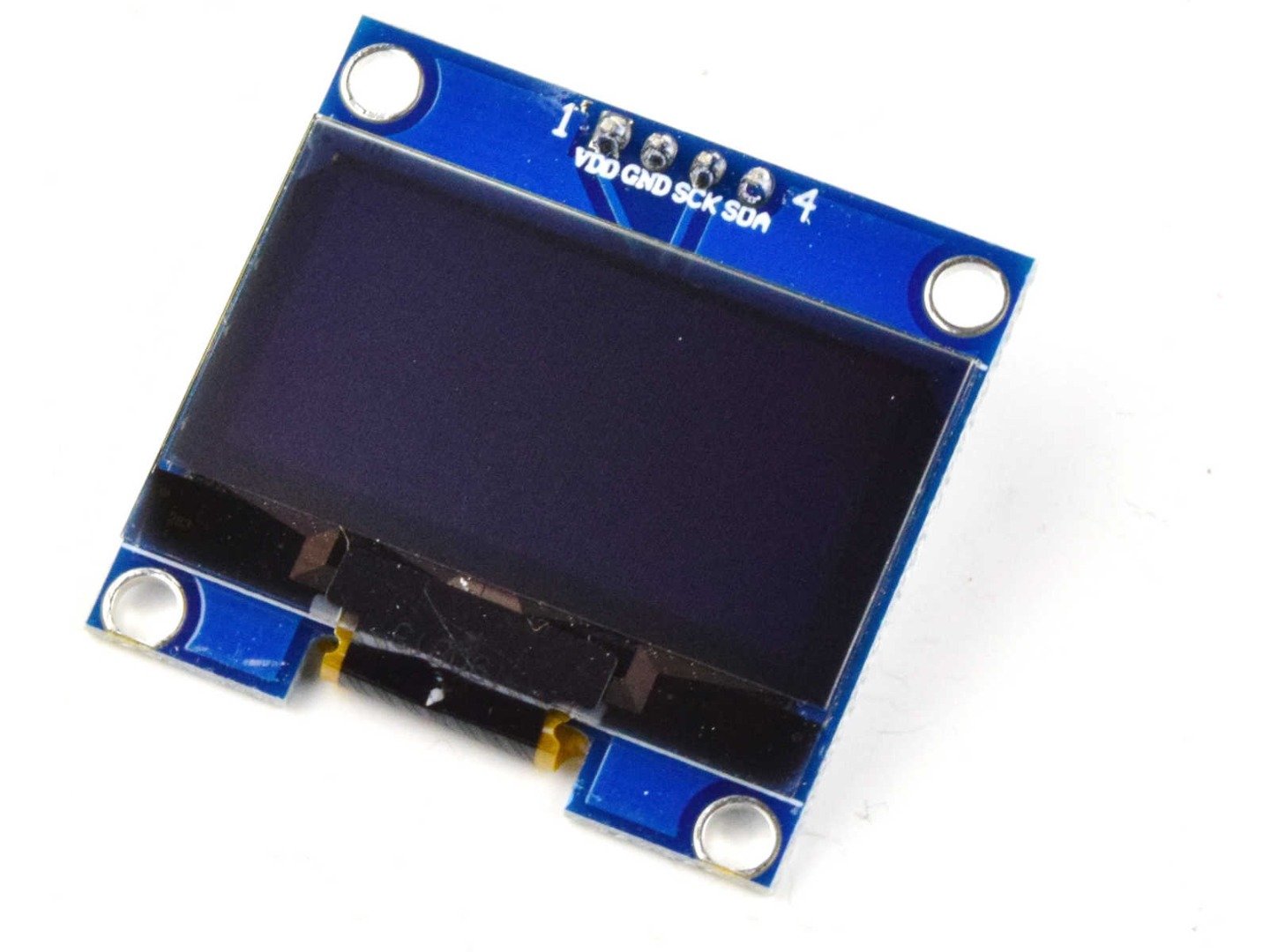
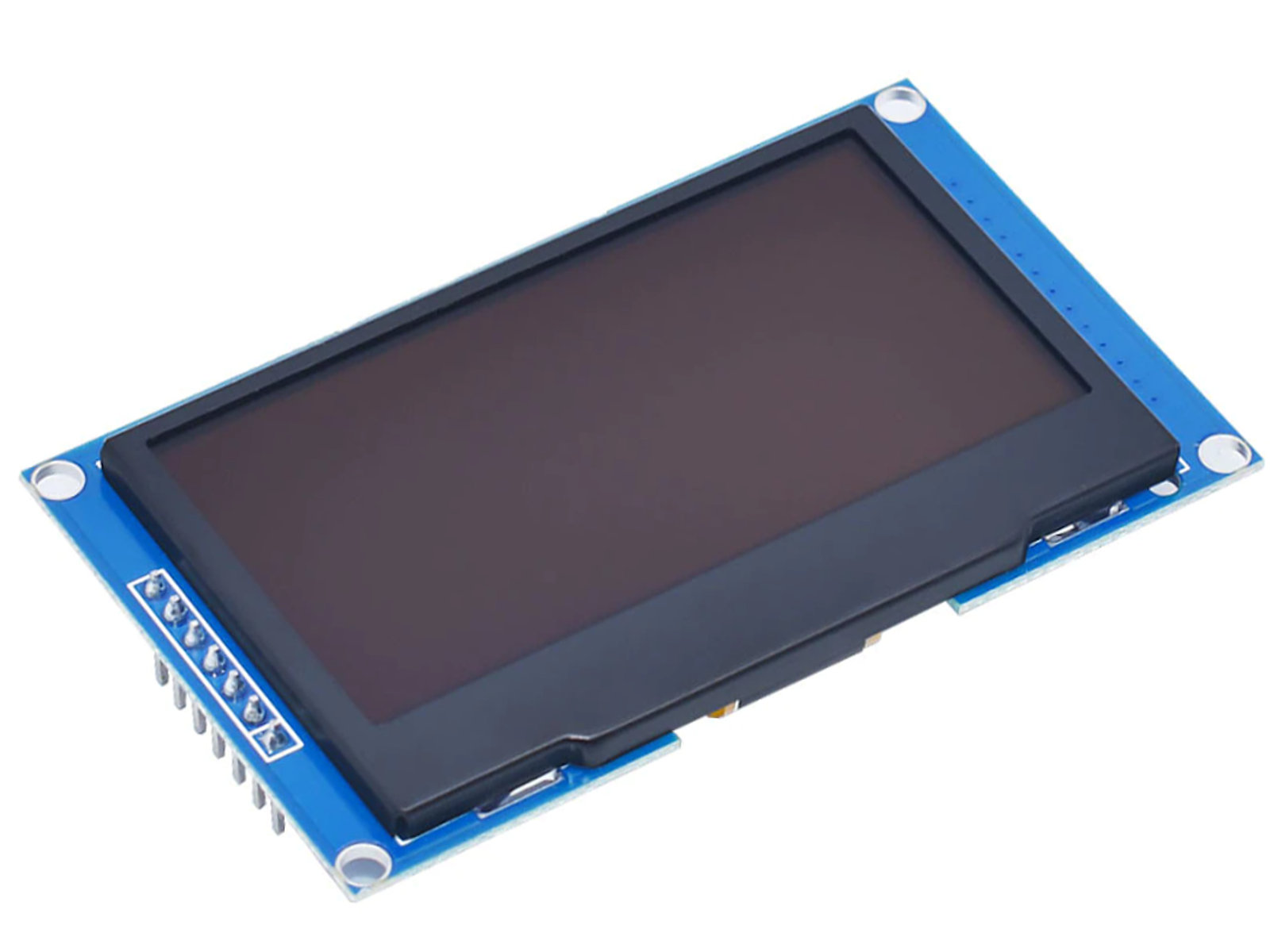
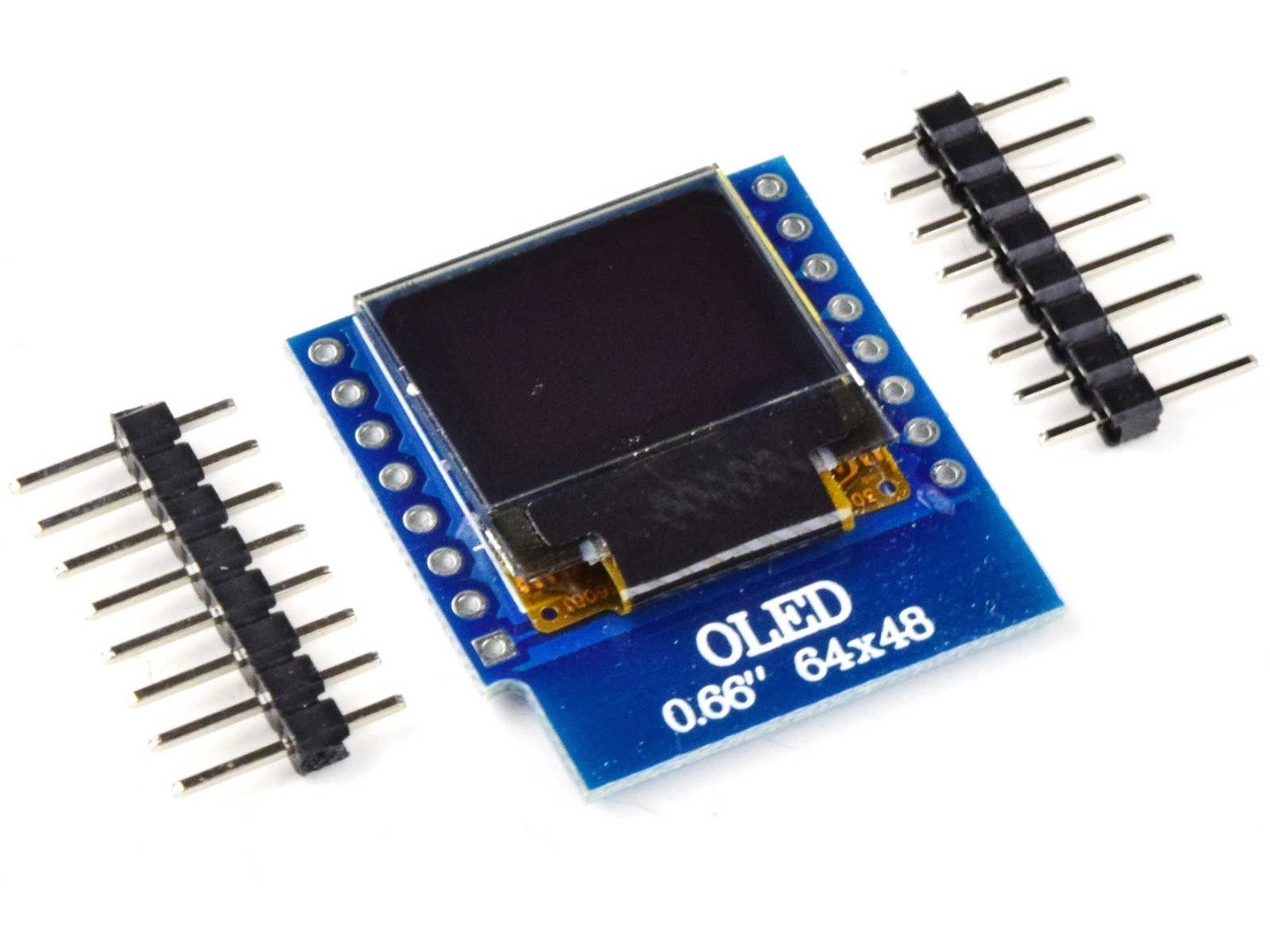
Type
0.96" Blue
SPI
0.96" Blue
I2C
1.3" Blue
I2C
2.42" Blue
SPI
0.66" D1 Mini
I2C
Color scheme
Blue-White
Blue-White
Blue-White
Blue-White
Blue-White
Resolution (Pixel)
128 x 64
128 x 64
128 x 64
128 x 64
64 x 48
Interface
SPI
I2C
I2C
SPI
I2C
Controller
SSD1306 or SH1106
SSD1306 or SH1106
SSD1306 or SH1106
SSD1309
SSD1306
Touch screen
Part # (Go to)
OLED Displays |  |  |  |  |  |
Type | 0.96" Blue | 0.96" Blue | 1.3" Blue | 2.42" Blue | 0.66" D1 Mini |
Color scheme | Blue-White | Blue-White | Blue-White | Blue-White | Blue-White |
Resolution (Pixel) | 128 x 64 | 128 x 64 | 128 x 64 | 128 x 64 | 64 x 48 |
Interface | SPI | I2C | I2C | SPI | I2C |
Controller | SSD1306 or SH1106 | SSD1306 or SH1106 | SSD1306 or SH1106 | SSD1309 | SSD1306 |
Touch screen | |||||
Part # (Go to) |
This tiny 128×64 Pixel OLED I2C 0.96 display shows white pixels on a dark blue background. It cooperates through its I2C bus capabilities perfectly with any microcontroller platform like for example Arduino or ST32. Please watch the YouTube video (link below) to see how it works.
Thanks to its operation and logic level voltage of 3-5V, this Display hooks up to any Arduino board without voltage compatibility issues.
These displays can come with an SSD1306 or SH1106 controller. Both models are very similar, but not identical. We recommend a library that supports both (see below). Then you can easily figure out which setting to use.
- Shows characters and graphics.
- Arduino library is available.
- 128 x 64 pixel, white/blue
- PCB size: 27 x 28 mm
- Screen size: 22 x 12 mm (0.96 Inches)
- Power consumption: <40mW
- Data interface: I2C serial
- I2C address: 0x3C (typically)
- This OLED I2C 0.96 has no Touch-Function.
Note: We recommend not using the library from Adafruit due to its incompatibility with the SH1106 controller. Here is a better library, supporting different controller models and definitely works with both controller types:
3 reviews for OLED I2C 0.96 inch, 128×64 Pixel, SSD1306 SH1106, 3-5V
Add a review
You must be logged in to post a review.
Related products
-
-
OLED Displays, WEMOS D1, D1 Mini
Wemos D1 Mini OLED Display 0.66 inch with 64 x 48 pixel
5.00 out of 5CAD 8.30CAD 6.64 -
-

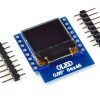
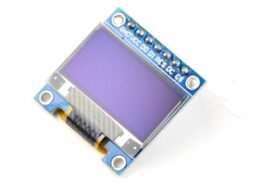
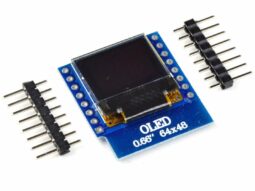
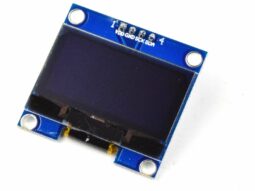
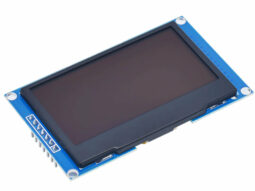
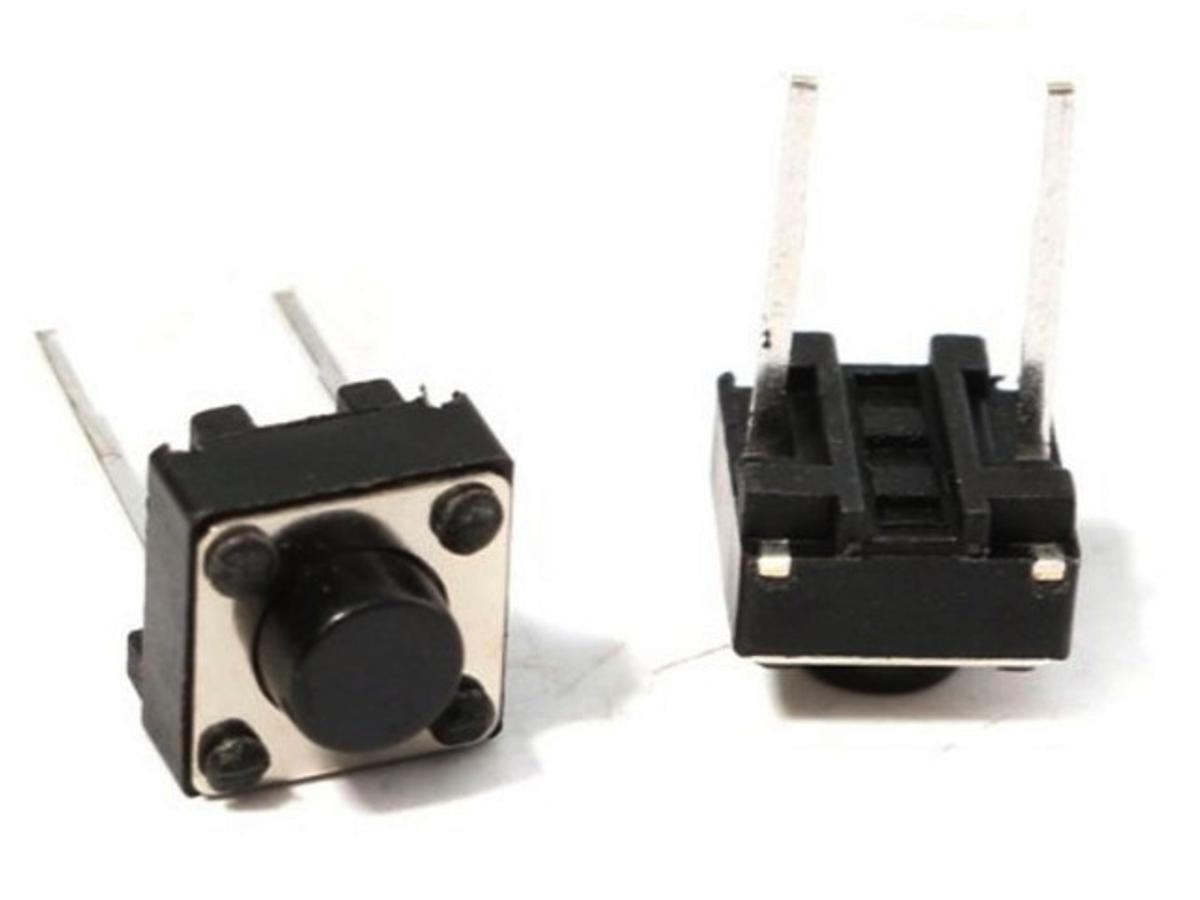
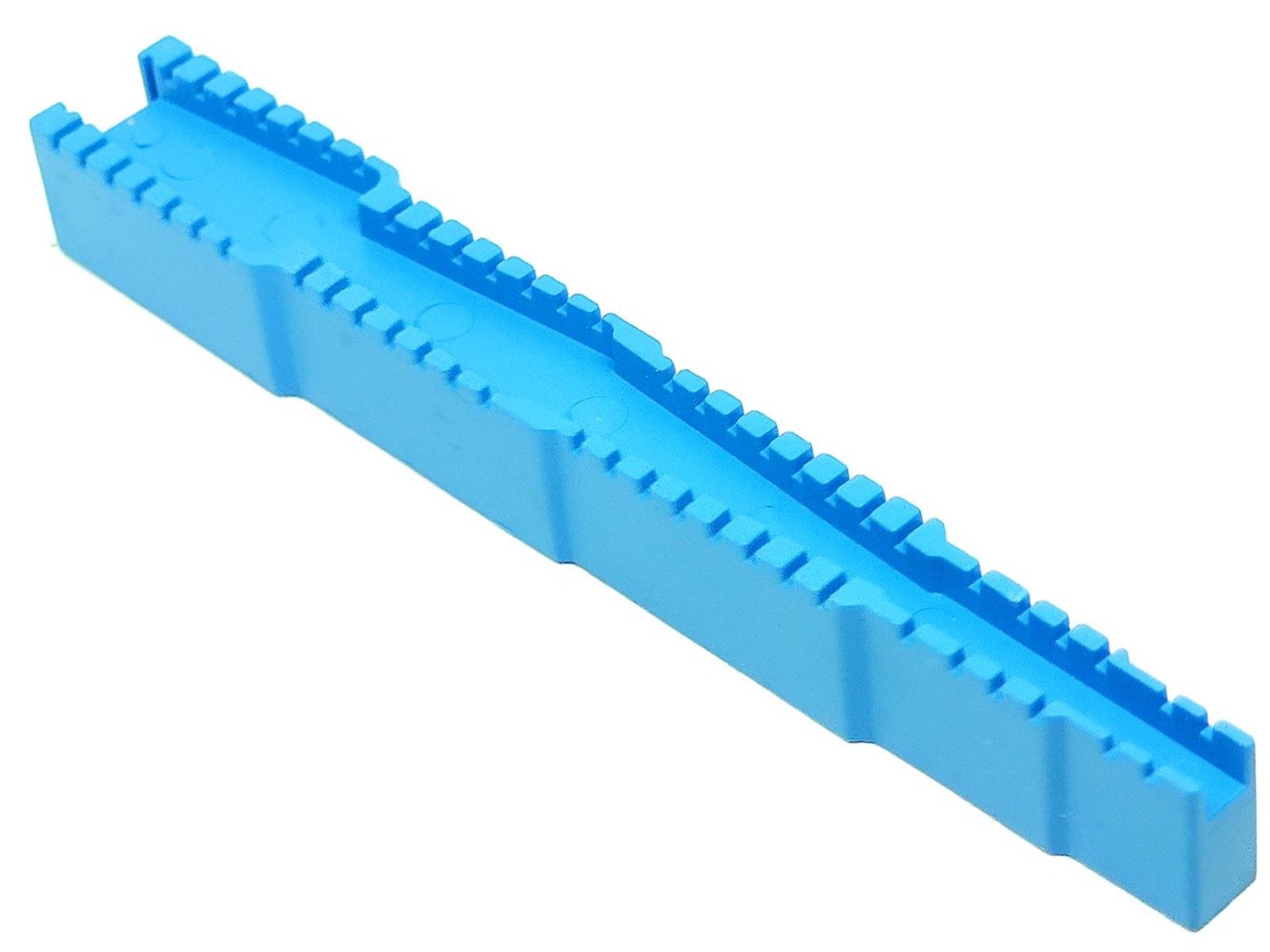
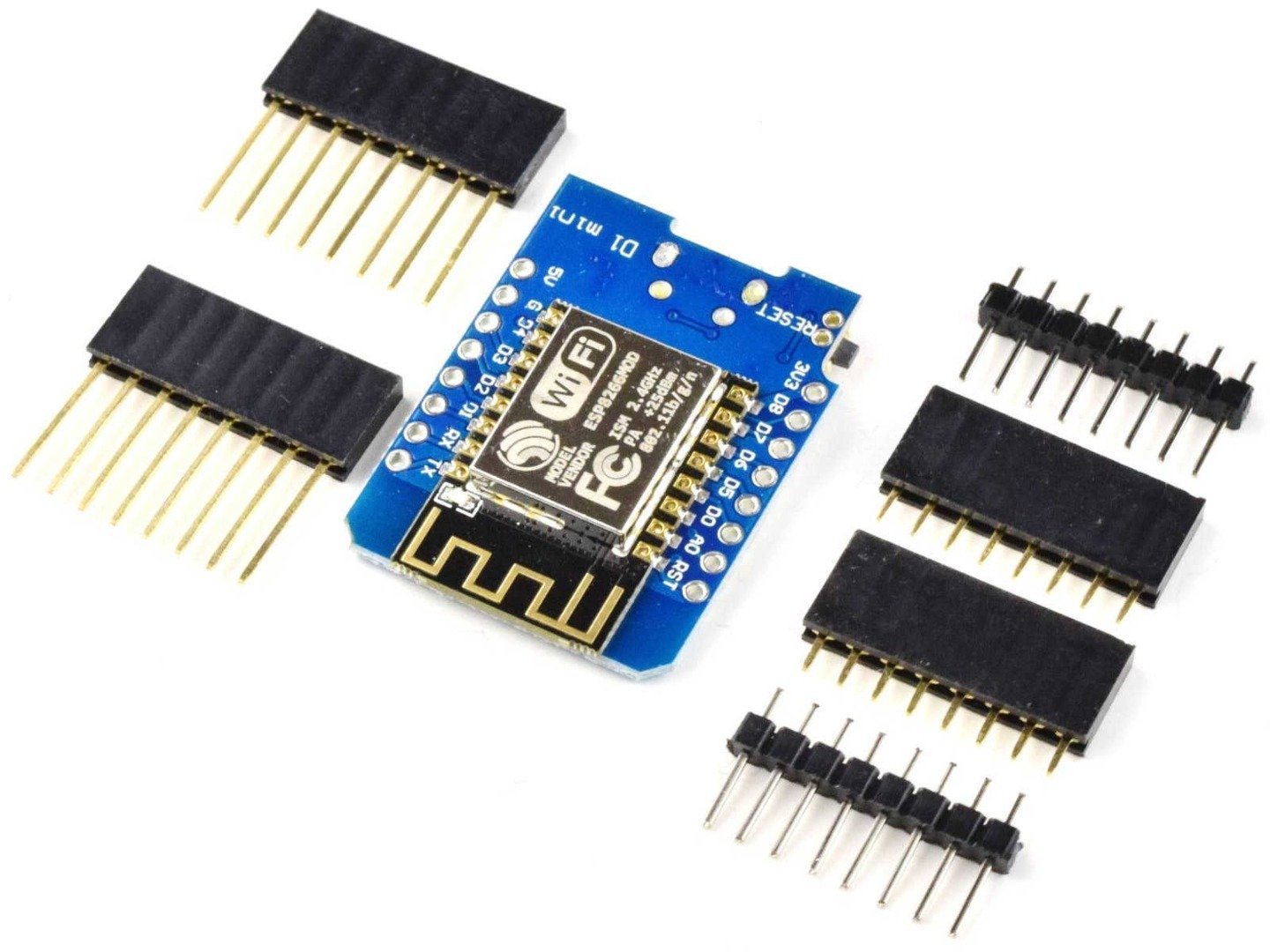



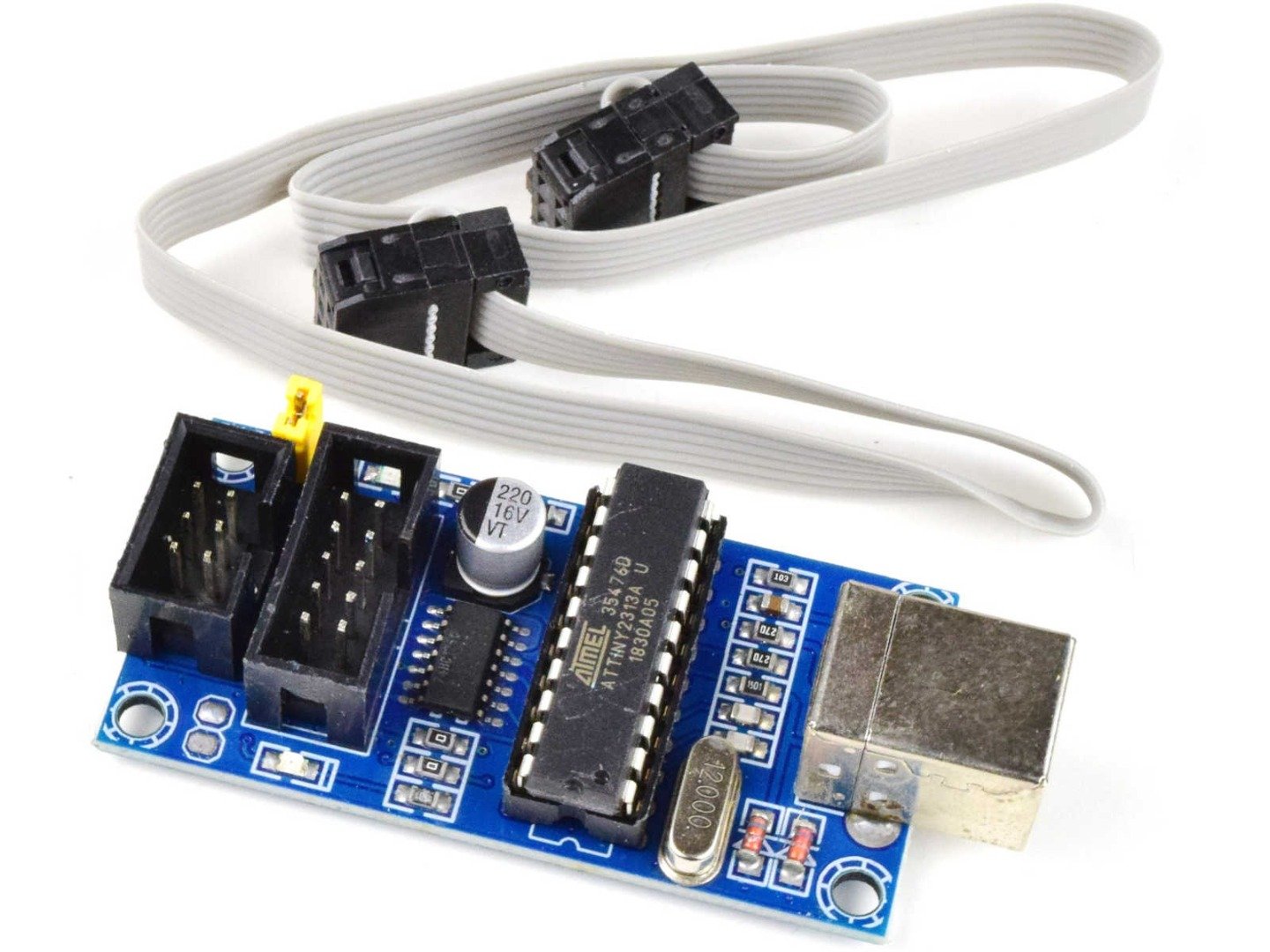
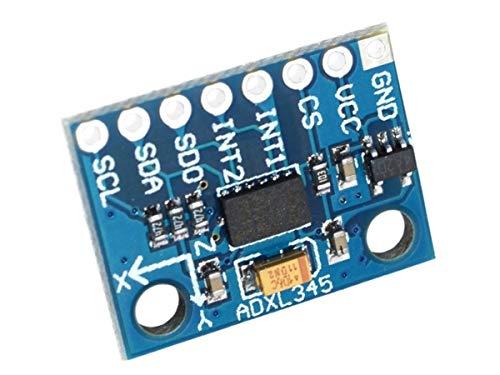
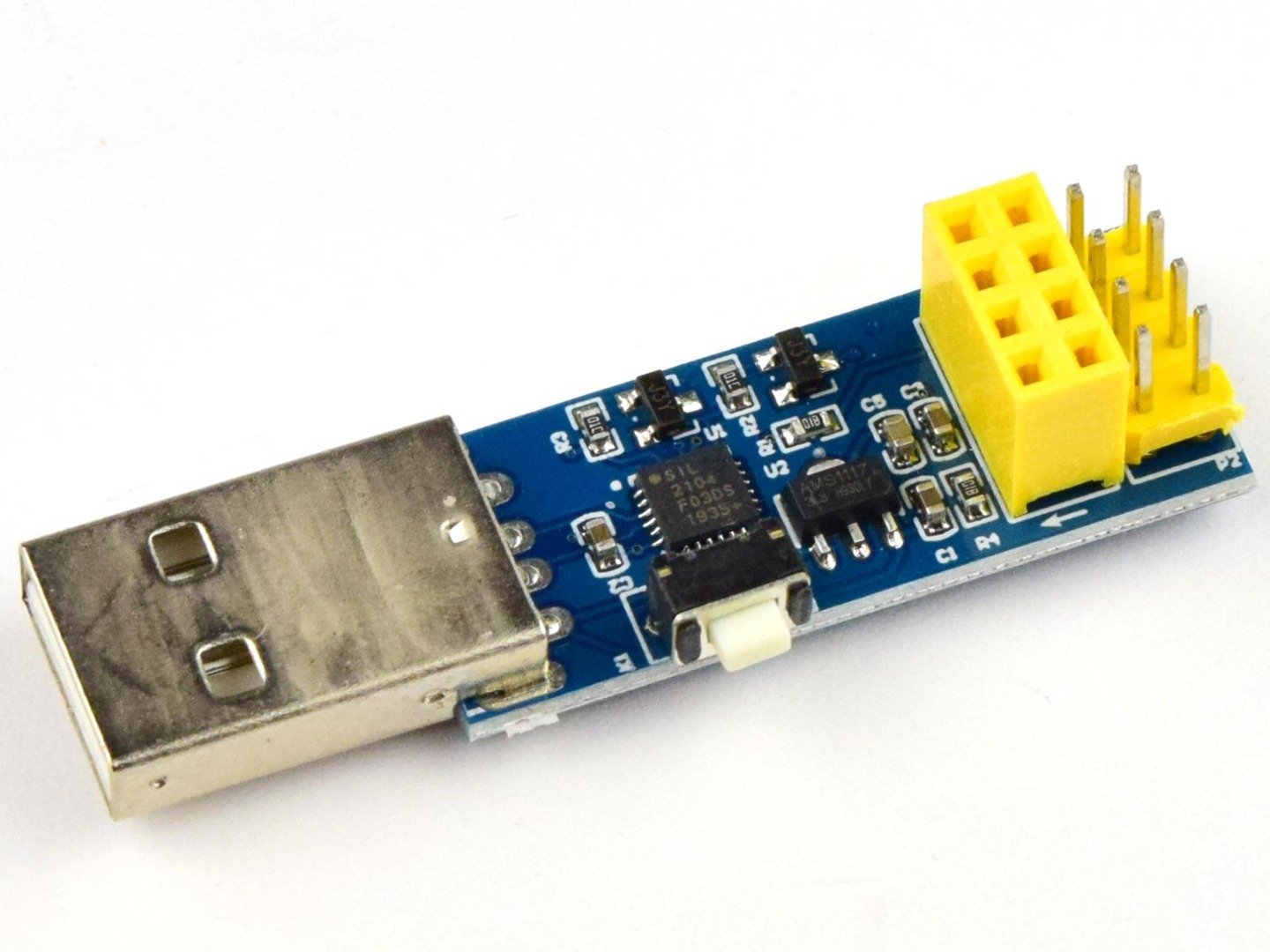
m.p (verified owner) –
So far so good with this display. No dead pixels and no banding or other inconsistencies.
The one I received looks slightly different from the product pictures. It has white pixels and an SSD1306 controller. I’m using it with an Arduino Leonardo and it’s running at 5V with no problems. It works with the u8g2lib library and the following constructor (again, this is for one I received with the SSD1306 controller, others may be different):
U8G2_SSD1306_128X64_NONAME_F_HW_I2C u8g2(U8G2_R0, U8X8_PIN_NONE);
It works fine with the I2C speed set to 100kHz or 400kHz.
It’s not the brightest display but for indoor or shaded areas it’s fine. The display and ribbon connector is quite fragile so don’t toss it back in a parts bin without some protection (the one I received came in a small plastic box).
Long story short: it’s small, it works, it looks good, it’s easy to use, and it’s inexpensive.
UNIVERSAL-SOLDER –
There are different PCB versions on the market, and panels from different manufacturers as well. But the differences are tiny and not affecting function or usability.
Rob Prouse –
These are easy to use with Arduino. The I2C interface uses less wires and is easy to hookup, but it is slower than the SPI versions of these screens (look for more pins), so there can be a bit of screen flicker if you are using at a higher framerate like with games.
E.V. –
Nice compact graphics display. This product is good quality with a good (low) price.